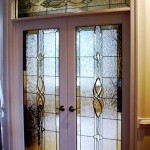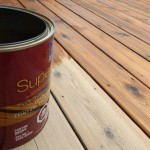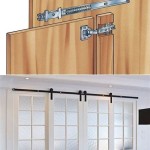Spa Interior Design Ideas: Creating a Sanctuary of Wellness
Spa interior design is a multifaceted discipline that goes beyond mere aesthetics. It's about crafting an environment that fosters relaxation, rejuvenation, and a sense of well-being. Successful spa design integrates elements of visual appeal, tactile comfort, and sensory stimulation to create a truly immersive and therapeutic experience for clients.
The principles of spa design differ significantly from those of other commercial spaces. While restaurants and retail stores often aim to energize and stimulate, spas prioritize tranquility and calmness. The goal is to detach clients from the stresses of their daily lives and guide them towards a state of inner peace. This objective requires a carefully considered approach to space planning, material selection, lighting design, and overall atmosphere.
Effective spa design necessitates a deep understanding of the target clientele. Factors such as age group, lifestyle, and cultural background should inform design choices. A high-end urban spa catering to busy professionals will likely differ significantly in its design from a destination spa nestled in a natural setting. Considering these demographics ensures that the spa's design resonates with its intended audience and meets their specific needs and expectations.
Budgetary considerations are also paramount. A comprehensive design plan should outline all costs associated with construction, furnishings, equipment, and ongoing maintenance. Balancing aesthetic aspirations with practical financial constraints is crucial for ensuring the long-term viability of the spa.
Prioritizing Natural Elements
One of the most effective ways to create a calming and restorative spa environment is to incorporate natural elements. This can be achieved through the use of natural materials, such as wood, stone, bamboo, and natural fibers like cotton and linen. These materials evoke a sense of warmth, authenticity, and connection to the earth.
The integration of natural light is also essential. Large windows and skylights can flood the space with sunlight, creating a bright and inviting atmosphere. When natural light is limited, it's important to supplement it with artificial lighting that mimics the qualities of natural light. Furthermore, the strategic placement of mirrors can help to amplify natural light and create a sense of spaciousness.
Incorporating plants and greenery is another vital component of nature-inspired spa design. Plants not only add visual interest but also improve air quality and reduce stress levels. Consider incorporating potted plants, vertical gardens, or even small indoor water features to enhance the natural ambiance.
The sounds of nature, such as flowing water or birdsong, can also contribute to a sense of tranquility. Install a small fountain or incorporate a sound system that plays soothing nature sounds. These auditory elements can help to mask unwanted noise and create a more relaxing atmosphere.
Color palettes derived from nature, such as greens, blues, and earth tones, reinforce the connection to the natural world. These colors are associated with tranquility, serenity, and relaxation. Avoid using overly bright or jarring colors, which can be stimulating and counterproductive to the spa's intended atmosphere.
Optimizing Space and Flow
The spatial layout and flow of a spa are critical to the overall experience. A well-designed spa should provide a seamless and intuitive journey for clients, from the moment they enter to the moment they leave. This requires careful consideration of the placement of various areas, such as the reception area, waiting area, treatment rooms, changing rooms, and relaxation lounge.
The reception area should be welcoming and inviting, creating a positive first impression. It should be spacious enough to accommodate clients comfortably, and it should be easy to navigate. Consider incorporating comfortable seating, a visually appealing reception desk, and subtle branding elements to create a cohesive and professional look.
The waiting area should be a tranquil oasis, where clients can relax and prepare for their treatments. Provide comfortable seating, soft lighting, and calming music. Consider offering complimentary refreshments, such as herbal tea or infused water. Visual distractions, such as magazines or brochures, should be kept to a minimum to encourage relaxation.
Treatment rooms should be designed to maximize privacy and comfort. Soundproofing walls and doors is essential to minimize noise disturbance. The lighting should be adjustable to create a soothing ambiance. The layout should be functional and efficient, allowing therapists to move freely and provide treatments without obstruction. Consider incorporating features such as heated treatment tables, aromatherapy diffusers, and ambient lighting to enhance the client's experience.
Changing rooms should be clean, well-maintained, and equipped with all the necessary amenities, such as lockers, showers, and toiletries. Provide ample space for clients to change comfortably. Consider incorporating features such as heated floors and towel warmers to enhance the sense of luxury and comfort.
The relaxation lounge should be a sanctuary of peace and tranquility, where clients can unwind after their treatments. Provide comfortable seating, soft lighting, and calming music. Consider offering complimentary snacks and beverages. Visual distractions should be kept to a minimum to encourage relaxation and reflection.
Focusing on Sensory Experience
A successful spa design engages all five senses to create a truly immersive and therapeutic experience. Considerations for visual appeal, tactile comfort, auditory tranquility, olfactory stimulation, and even subtle taste elements can elevate the overall sensory experience and enhance the feeling of well-being.
Visual elements, as previously discussed, include the use of natural materials, calming color palettes, and strategic lighting design. However, other visual details, such as artwork, decorative items, and even the presentation of treatment products, can also contribute to the overall aesthetic appeal. Choose artwork that is calming and evocative, and display products in an organized and visually appealing manner.
Tactile comfort is essential for creating a relaxing and inviting environment. Use soft, plush fabrics for seating, linens, and towels. Consider incorporating elements such as heated blankets and comfortable pillows to enhance the feeling of comfort and relaxation. The temperature of the spa should be carefully regulated to ensure that clients are comfortable at all times.
Auditory tranquility can be achieved through the use of soundproofing materials, calming music, and natural sound elements. Avoid using loud or jarring noises, which can be disruptive and counterproductive to the spa's intended atmosphere. Consider incorporating features such as white noise machines or nature sound generators to mask unwanted noise.
Olfactory stimulation can be used to create a specific mood or atmosphere. Aromatherapy diffusers can be used to disperse essential oils throughout the spa. Choose essential oils that are known for their calming and relaxing properties, such as lavender, chamomile, and sandalwood. Avoid using strong or overpowering scents, which can be irritating to some clients.
Subtle taste elements can also contribute to the sensory experience. Offer complimentary refreshments, such as herbal tea, infused water, or healthy snacks. These small details can enhance the feeling of luxury and indulgence, and they can also contribute to the overall sense of well-being.
By carefully considering all five senses, spa designers can create a truly immersive and therapeutic environment that promotes relaxation, rejuvenation, and a sense of inner peace.
In conclusion, creating a successful spa interior requires a holistic approach that considers the needs and expectations of the target clientele, the spatial layout and flow of the space, and the sensory experience. By prioritizing natural elements, optimizing space, and focusing on sensory details, spa designers can create a sanctuary of wellness that promotes relaxation, rejuvenation, and a sense of inner peace.

How To Revamp Your Spa Decor On A Budget Skin Inc

Luxury Spa Design For Wellness Interiors Michele Pelafas

7 Amazing Trend Spa Interior Design Ideas With Stone

Discover The Ultimate Luxury Spa Interior Design Secrets

Spa Interior Images Browse 816 620 Stock Photos Vectors And Adobe

95 Spa Decor Design Ideas Massage Room Rooms

Before After Inviting Med Spa Interior Design Decorilla

Spa Decor Ideas

Inspiring Interior Design Trends For 2024 Part Ii Spa Rituals

Spa Design New Experience Of Wellness èdoc Architects
Related Posts








